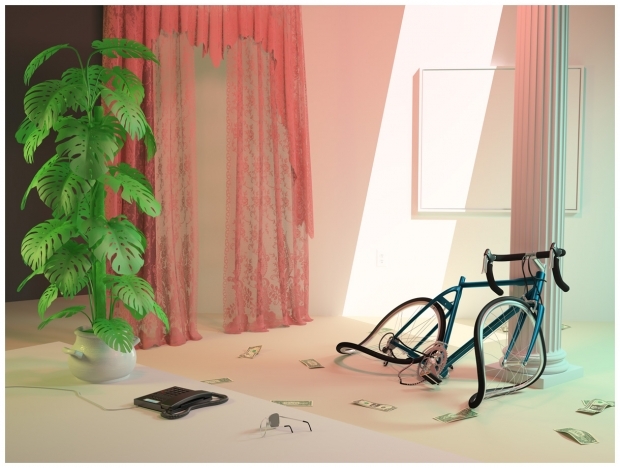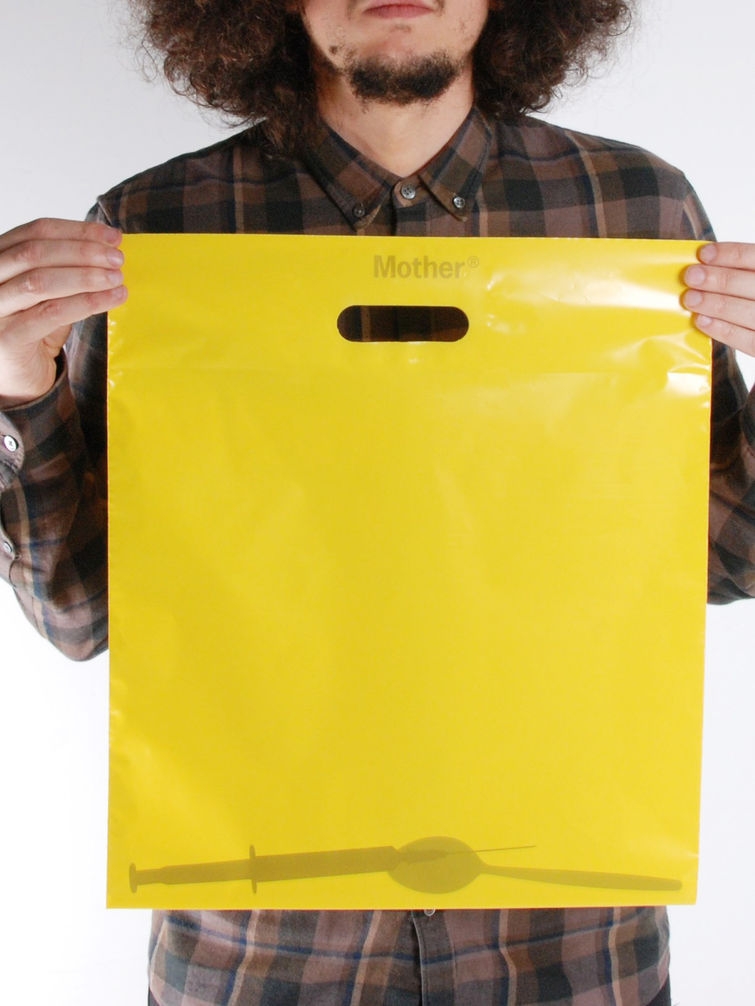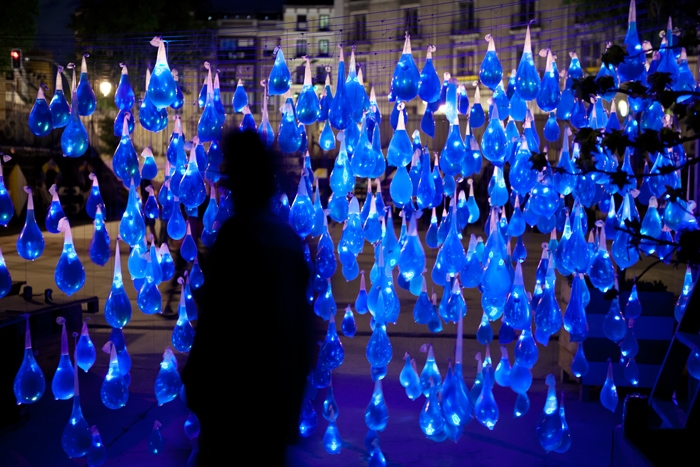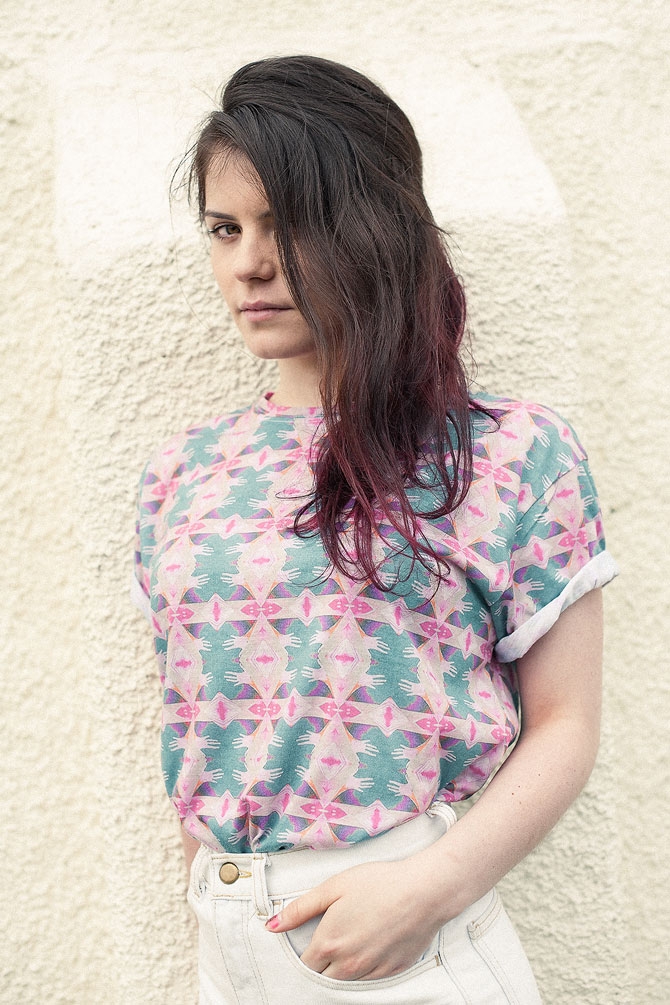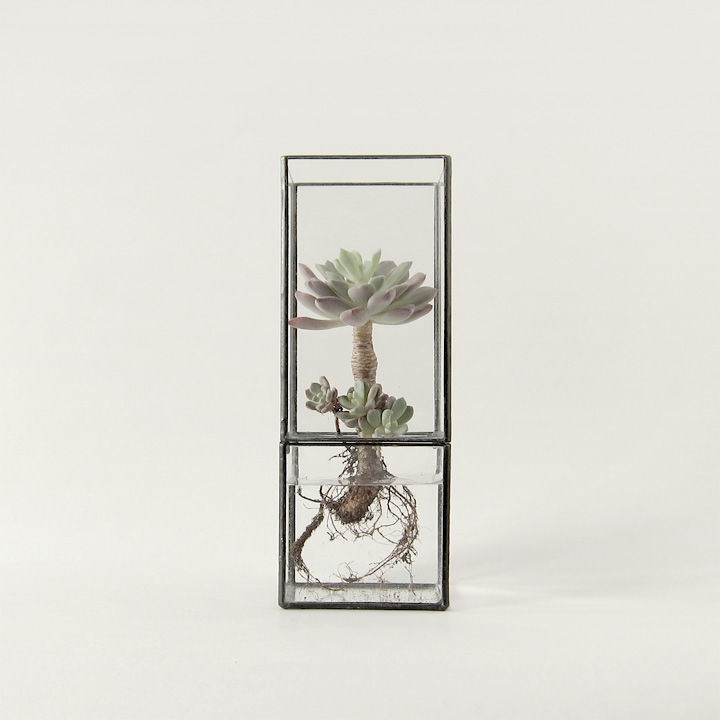The hyper-realistic visuals multimedia artist Takeshi Murata created for Oneohtrix Point Never's new "Problem Areas" clip are actually a big departure for Murata, whose work in the past has been considerably glitchier.
To create the images, which originally appeared in his 2012 solo show "Synthesizers," at Salon 94 in New York, Murata either purchased stock images from a ready-made 3D web mall or rendered images from scratch using digital imaging software. He also made use of open source projects, and what an artist's statement describes as his "DIY high-tech vocabulary."
The pair also collaborated on PointNever.com, which is Murata's interpretation of OPN's new music. Check out some images from "Synthesizers," the "Problem Areas" video below, as well as a 2010 Creators Project feature with Murata showing some of his earlier "data mosh" work.
Oneohtrix Point Never's new full length R Plus Seven is out September 30/October 1 from Warp.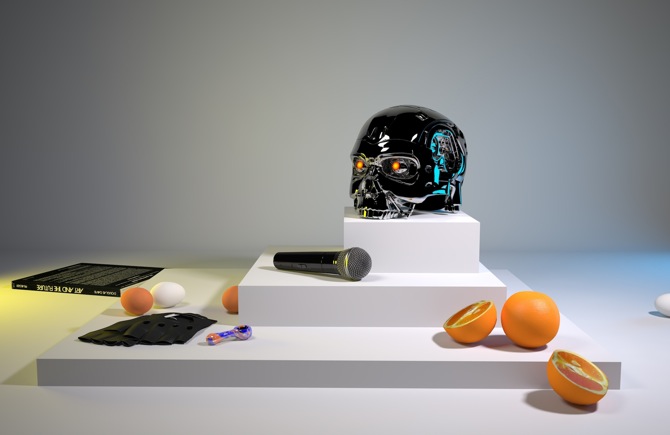

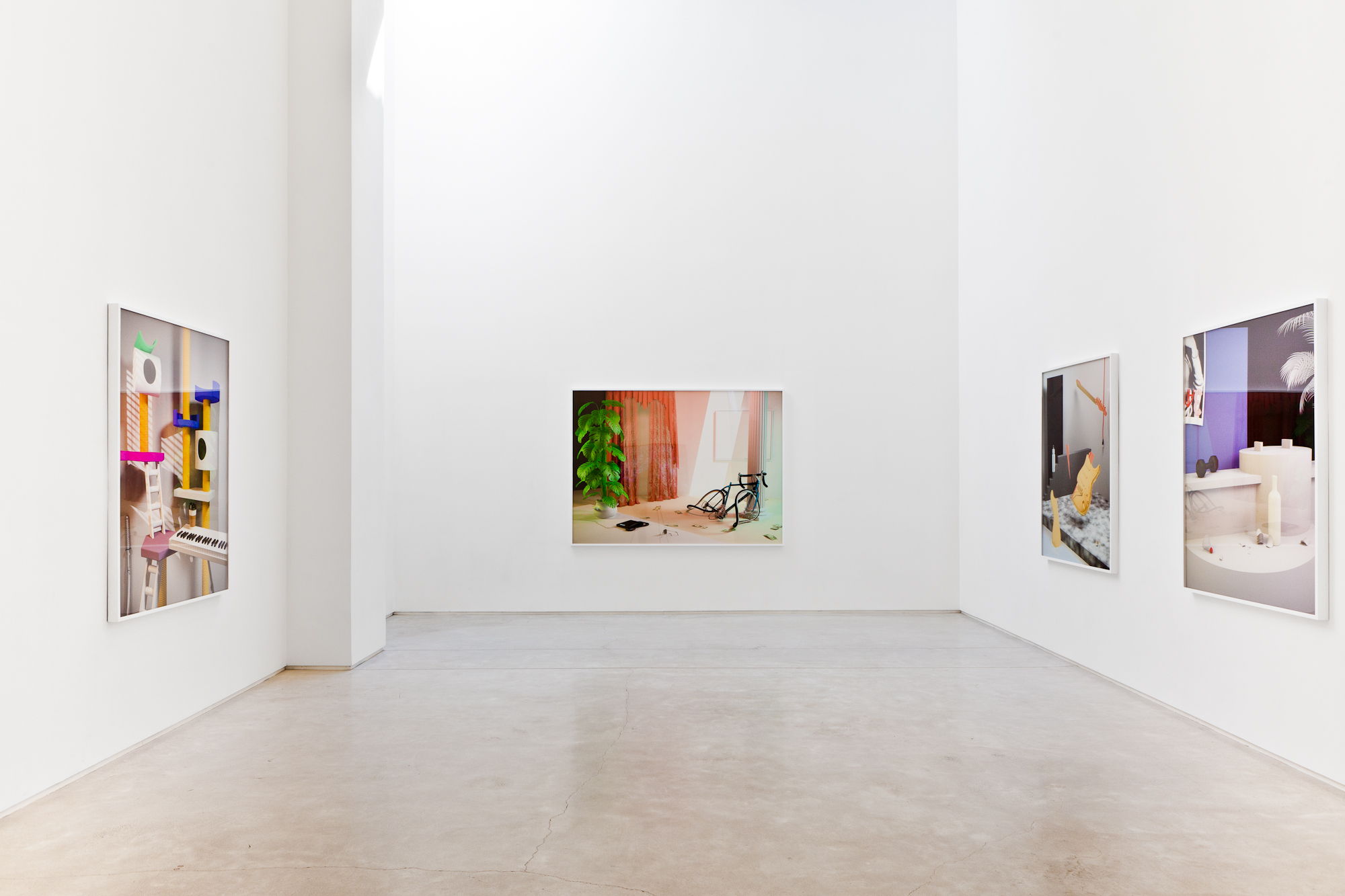
Believe it or not, that amazing glass dome at the top of this post was one of the original plans for LAX. The image is part of a new exhibition at the Architecture and Design Museum in Los Angeles that offers a hypothetical version of L.A. by collecting a series of scrapped civic projects. The collection includes plans and renderings for everything from transportation systems to parks and building projects, which never made it past the planning phase.
According to the curators, the plans, each presented with the narrative of their creation and reason for eventual demise, would have created a much denser city with clearly defined urban centers instead of the sprawling neighborhoods of present day L.A. The museum also created an iPhone app to guide users to sites of the ill-fated projects.
"Never Built: Los Angles" is open until October 13.  Frank Lloyd Wright's Huntington Hartford Sports Club
Frank Lloyd Wright's Huntington Hartford Sports Club Steven Holl's Natural History Museum Addition
Steven Holl's Natural History Museum Addition

The Goodell Monorail
Santa Monica Offshore Freeway
William H. Evans' Tower Of Civilization, 1939
Increasingly, shops and municipalities are pursuing bans of plastic shopping bags altogether. Ad agency Mother London takes a different though still aggressive design approach in an effort to end the culture of the disposable bag. The second edition of the Uncarriable Carrier Bags shames plastic bag users by displaying outlines of questionable items such as knives, guns, heroin needles and massive sex toys that could be contained within.
Back in 2008, Mother London's first run of Uncarriable Carrier Bags took a less subtle approach with full branding identities for embarrassing fictional locations like a Phil Collins fanclub, a fast food place specializing in dolphin meat, and a sticky looking sperm bank.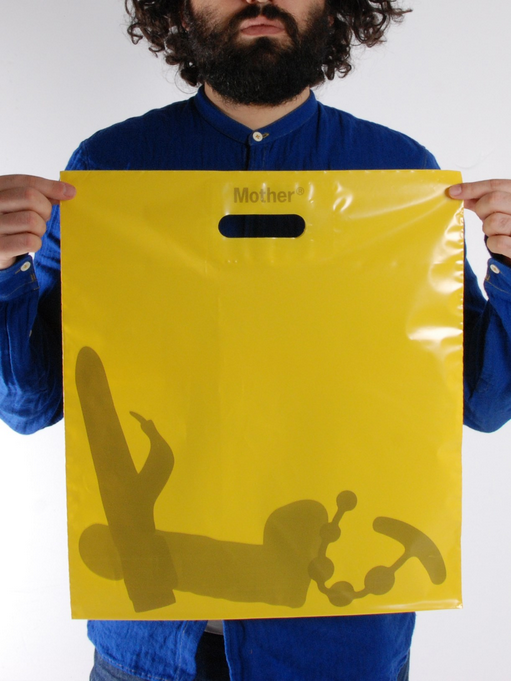


'Know thyself' is a good mantra for an influential label such as Levi’s. The brand’s iconic 501 jean turns 140 this year, and the classic shrink-to-fit jean is as relevant a style today as they were back in the 19th century.
If one needs to study up on the history of the 501, this video below and pdf are a good place to start. But Levi’s is putting out all the stops to commemorate the 501’s 140th year anniversary. It’s taken the campaign a step further with a neat timeline on the Levi’s Vintage Clothing site.
LVC has done a fine job in releasing special reissues of every 501 model over the years, but the Historic 501 Timeline is the first time all that information has been offered in a nice visual package. And it’s a lot of information. Each LVC 501 jean is made using Cone Mills denim to the exact specifications of its original model—from fit and hardware all the way down to the labels and packaging.
The illustrative timeline begins in 1890, the year Levi’s patented its riveted jeans (from 1873, the 501s were known as XX), and goes on to chronicle all the models up until 1978. It’s filled with all kinds of useful archival tidbits, marking the introduction of belt loops in 1922, the first time the now-famous red tab was sewed on in 1936 or when kids began calling them “jeans” instead of “overalls” in the 1950s.
Head on over to Levi’s Vintage Clothing to view the Historic 501 Timeline.
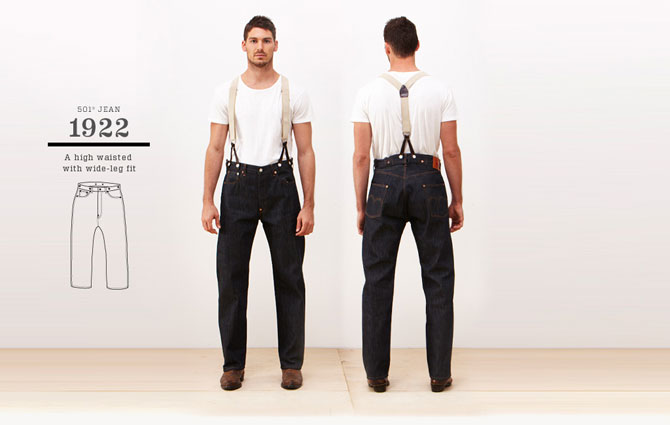
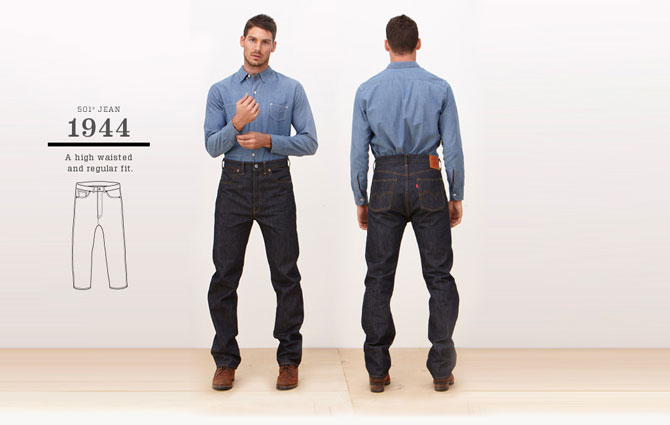

When is something vintage new? When it is the new vintage basement of Wicker Park boutique Una Mae's here in Chicago, that's when. The Nothing Major family invites you to join us and Una Mae's Saturday, August 17 for a celebration in Una Mae's newly launched vintage basement. Koval and Revolution Brewing will be providing the libations for those of age. And there will be live music from special guests, too. Oh, and the big draw for you stylish reader are the super deals and sales.
Celebrate Nothing Major
Saturday, August 17, 11am-9pm
Una Mae's, 1528 N Milwaukee Ave
Chicago IL

When the Spanish light artists at Luz Interruptus installed and illuminated 800 condoms filled with blue water, they chose a politically charged location. A square in Madrid that previously housed a public swimming pool had been closed two years earlier by local politicians. Even worse, new plans to develop the square into a tourist market would take the space from locals completely. To reference the need for community recreation, and the history of the square, the artists designed and installed an interactive sculpture called "Prophylactic rain that doesn’t wet anything" with the help of a few local kids.





For a little under a decade, the Boulder-based cult denim label Kicking Mule Workshop—or KMW for short—has made a name for itself by simply crafting basic goods of the highest quality. At KMW, the best fabrics and leathers from all over the world meet an unmatched eye for the details of the craft.
So when Kicking Mule quietly closed its workshop earlier this year, many believed it was the end of a promising label. Luckily, KMW is offering a final production run through Context Clothing, the Madison, Wisconsin store that’s been stocking it from the beginning. You’ll find cardholders and belts made in Japan, a loopwheel fleece sweatshirt, and their slim-fit 1980 selvedge jeans—all at drastically reduced prices.
Scottish band Tango In the Attic have a new EP called Crushed Up, but it is those Crushed Up tees we're talking about today—the first offering from their Domicile Crocodile brand. The tees, designed by Fraser Stephen, Jane McFarlane and Jonathan McFarlane and made by Clara Bell take from the EP artwork pattern in two separate garments: an all-over printed tee and a T-shirt sporting the pattern on the pocket and sleeve lining.
The limited-edition shirts will be available for order through the Domicile Crocodile Facebook and Bandcamp pages.
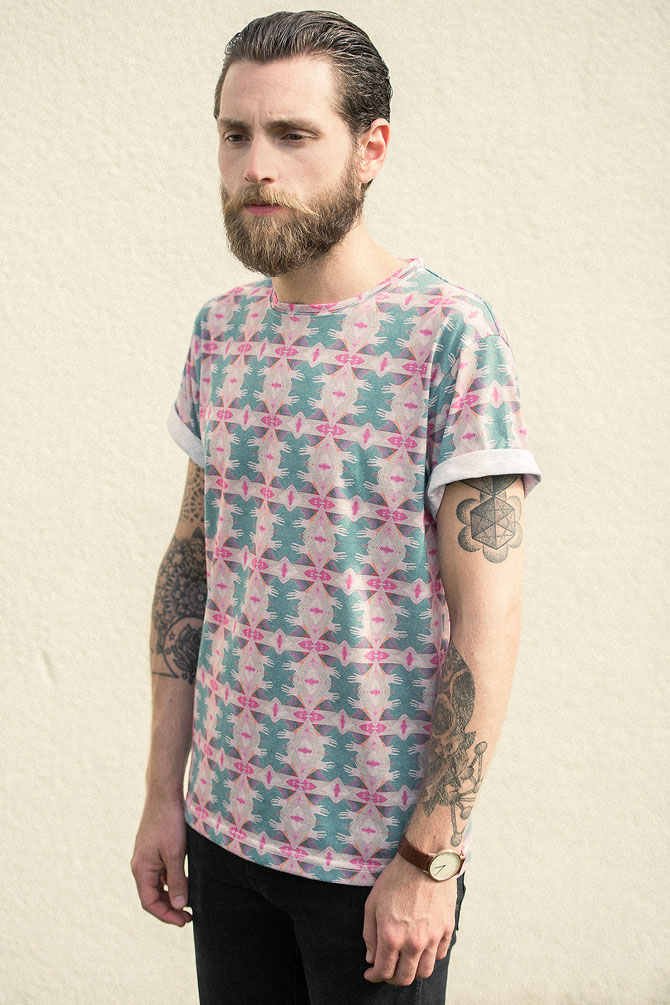
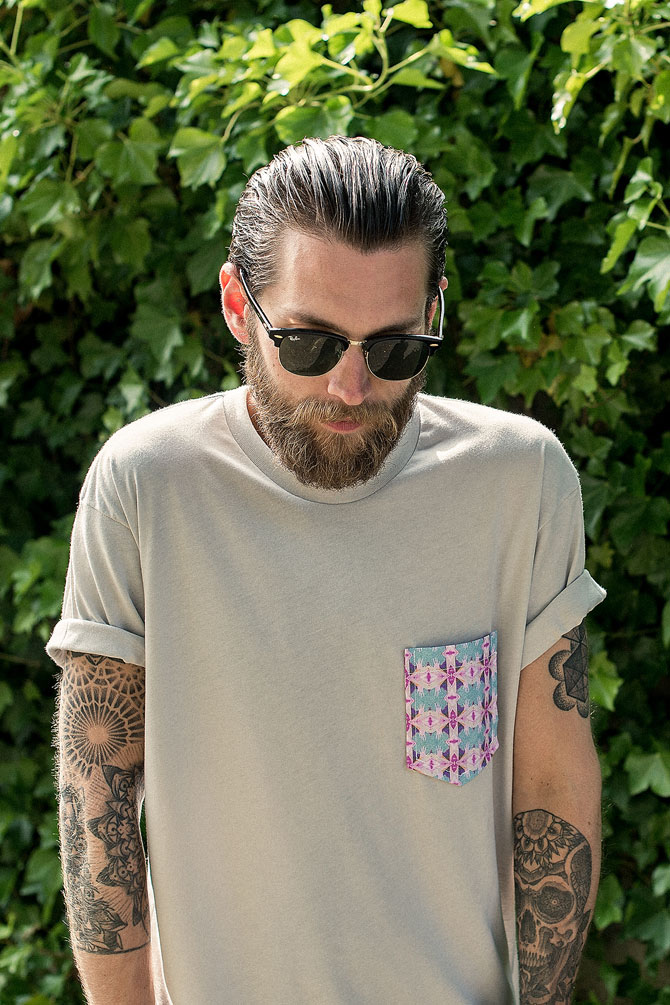
Daisuke Tsumanuma and Kenichi Yamada named their miniature hydroponic terrarium company 10¹² TERRA to reference the number of new cells a plant in one of their containers can produce a day. Their minimal designs, the tallest planter standing at just under one foot, have a big advantage over sealed terrariums in that the separate top and bottom chambers make replacing murky water easy. [via Spoon Tamago]
Each terrarium is made by hand, and cost around $100 depending on the size.



Designer Andy Welsh's Floating Structures series began as a way to look at architecture without context. His manipulations present multiples of the familiar lines and shapes of recognizable buildings in cities like Singapore, Tokyo, and London, in new orb-like forms colored only with fuschia and pale yellow tones.
